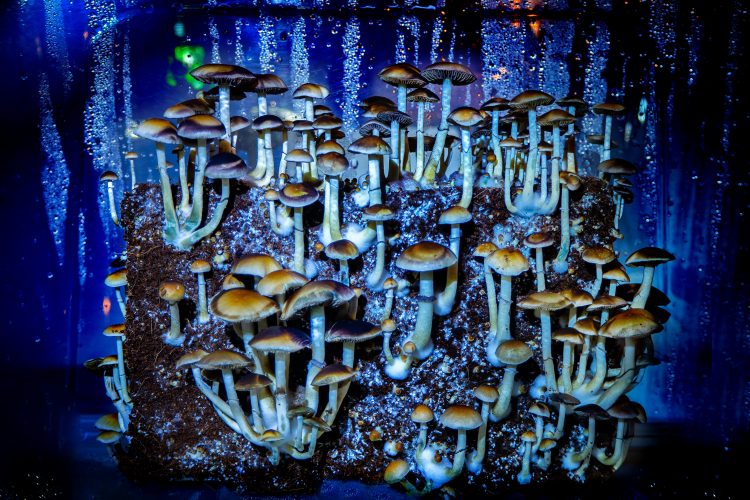Psychedelic drug discovery enabling discovery of new psychiatric drugs
Posted: 18 September 2020 | Hannah Balfour (Drug Target Review) | No comments yet
Having resolved the structure of psychedelic drugs bound to the 5-HT2A serotonin receptor researchers are now developing new therapeutic drugs.


Psychedelic drugs such as LSD, psilocybin, and mescaline cause severe and often long-lasting hallucinations, but also show great potential in treating serious psychiatric conditions, such as major depressive disorder. In order to understand their therapeutic effect, and potentially design non-hallucinogenic alternatives, researchers need to establish how these drugs interact with brain cells at the molecular level to cause their effects.
In a new study, scientists at University of North Carolina (UNC)-Chapel Hill and Stanford have solved the high-resolution structure of these compounds when they are actively bound to the 5-HT2A serotonin receptor (HTR2A) on the surface of brain cells.
The collaborators, researchers from the UNC lab of Dr Bryan Roth and the Stanford lab of Dr Georgios Skiniotis, state their research is already leading to the exploration of more precise compounds that could eliminate hallucinations but still have strong therapeutic effects. These could include chemically altered versions of the drugs in the study, such as psilocybin – the psychedelic compound in mushrooms that has been granted breakthrough status by the US Food and Drug Administration (FDA) to treat depression.
![This illustration shows the chemical architecture of amino acids that make up the 5-HT2A serotonin receptor complex bound to a psychedelic compound (pink, top) [Credit: Roth Lab (UNC School of Medicine)].](https://drug.russellpublishing.co.uk/wp-content/uploads/serotonin-receptor-psychedelic-drugs-375x500.jpg)
![This illustration shows the chemical architecture of amino acids that make up the 5-HT2A serotonin receptor complex bound to a psychedelic compound (pink, top) [Credit: Roth Lab (UNC School of Medicine)].](https://drug.russellpublishing.co.uk/wp-content/uploads/serotonin-receptor-psychedelic-drugs-375x500.jpg)
This illustration shows the chemical architecture of amino acids that make up the 5-HT2A serotonin receptor complex bound to a psychedelic compound (pink, top) [Credit: Roth Lab (UNC School of Medicine)].
“Millions of people have taken these drugs recreationally and now they are emerging as therapeutic agents,” said co-senior author Roth, the Michael Hooker Distinguished Professor of Pharmacology at the UNC School of Medicine. “Gaining this first glimpse of how they act at the molecular level is really important, a key to understanding how they work. Given the remarkable efficacy of psilocybin for depression (in Phase II trials), we are confident our findings will accelerate the discovery of fast-acting antidepressants and potentially new drugs to treat other conditions, such as severe anxiety and substance use disorder.”
Scientists believe that activation of HTR2A, which is expressed at very high levels in the human cerebral cortex, is key to the effects of hallucinogenic drugs. “When activated, the receptors cause neurons to fire in an asynchronous and disorganized fashion, putting noise into the brain’s system,” said Roth. “We think this is the reason these drugs cause a psychedelic experience. But it isn’t at all clear how these drugs exert their therapeutic actions.”
Skiniotis said their research was facilitated by several different advances: “One of these is better, more homogeneous preparations of the receptor proteins. Another is the evolution of cryo-electron microscopy technology, which allows us to view very large complexes without having to crystalise them.” Co-first author Dr Kuglae Kim (a post-doctoral researcher in Skiniotis’ lab) is credited for the former, as he explored various experimental methods to purify and stabilise the very delicate serotonin receptors, subtly modifying it until they could attain sufficient quantities for use in studies.
The research team used Kim’s work to reveal the first X-ray crystallography structure of LSD bound to HTR2A. Importantly, Stanford investigators then used cryo-EM to uncover images of a prototypical hallucinogen, called 25-CN-NBOH, bound together with the entire receptor complex, including the effector protein Gαq. In the brain, this complex controls the release of neurotransmitters and influences many biological and neurological processes.
The cryo-EM image is like a map of the complex, which Kim used to illustrate the exact structure of HTR2A at the level of amino acids.
Roth and colleagues are now applying their findings to structure-based drug discovery for new therapeutics. Their goal is to discover potential candidates that may be able offer therapeutic benefit without the psychedelic effects.
Skiniotis concluded: “The more we understand about how these drugs bind to the receptors, the better we will understand their signalling properties. This work does not give us the whole picture yet, but it is a fairly large piece of the puzzle.”
The study was published in Cell.
Related topics
Analytical techniques, Drug Development, Drug Targets, Imaging, Neurosciences, Structural biology, Therapeutics
Related conditions
Major depressive disorder (MDD), psychiatric disorders
Related organisations
Stanford University, University of North Carolina (UNC)-Chapel Hill
Related people
Dr Bryan Roth, Dr Georgios Skiniotis, Dr Kuglae Kim



